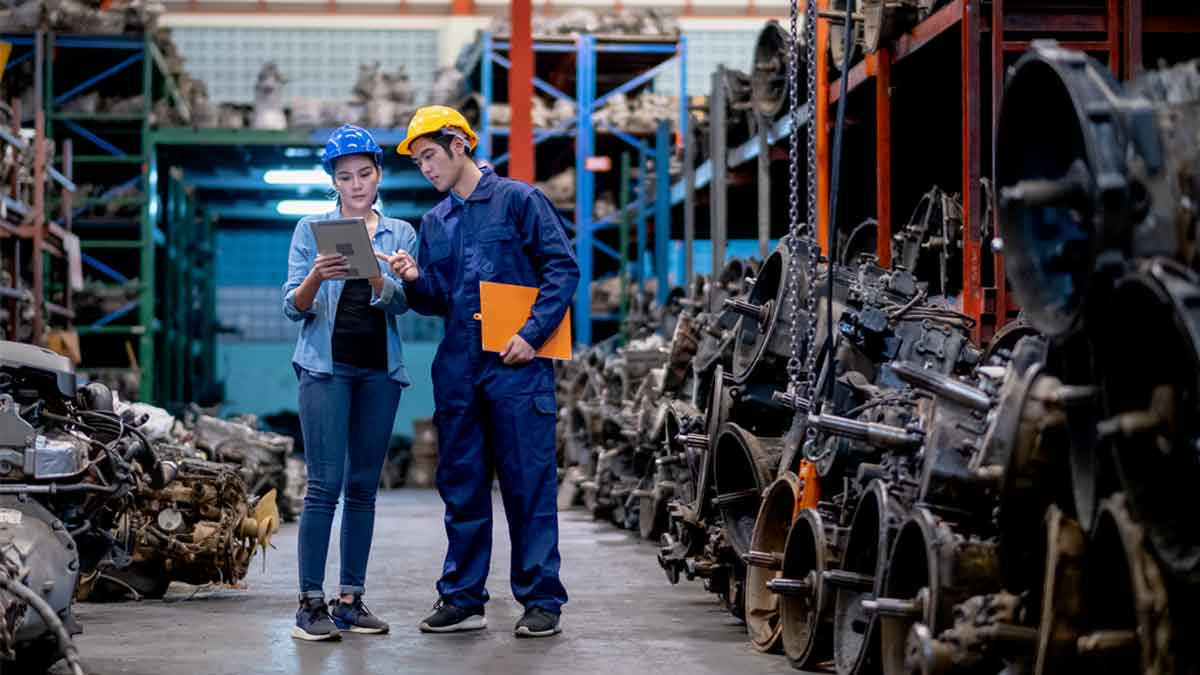The Internet of Things is transforming many industries of the global market, including the automotive sector. IoT applications in the automotive industry are a trend that is changing the pace of our lives faster than we expected.
There are many important things to be aware of automotive industry applications of IoT have taken on the responsibility to transform the industry. Before we get into the IoT’s applications we want to give you a glimpse at the top IoT facts.
- 59% of equipment and vehicle purchases already include connected features.
- 74% of the top 50 automotive OEMs have a connected vehicle platform.
- Estimated OEM revenue from vehicle data by 2030 will be between $450 and $750 billion.
Top five IoT applications in the automotive industry.
Fleet Management
Among the best IoT applications in the automotive industry, fleet management is at the top of the list. Fleet managers have a lot of benefits from it, such as monitoring driver performance, and compliance with safety and environmental regulations. IoT also allows monitoring fuel consumption, so, it is possible to share driver’s health stats and send idle alerts.
The Cloud application stores the volume of sensor data from large vehicles fleets. Data is processed using various analytics features, conceptualized in a visual format, and then stored in the Cloud.
Fleet managers can access to this information to monitor various parameters. A fleet manager can enjoy many benefits, for example:
- Real-time fleet location monitoring
- The fleet’s cargo is weight tracked
- Monitoring fuel consumption and mileage
- Traffic conditions to be tracked
- Route management
- Time and driver management
IoT applications in the automotive industry automate trip planning and processes while delivering on-time and high-quality deliveries.
Connected Cars
Technology is constantly changing and evolving, as a result, it is transforming how people and things communicate. Connected cars come with many features that enhance the driving experience and increase safety.
The connected car warns the driver about external hazards and the internal reactions of the vehicle. Consequently, the central monitoring system provides information about the car’s health.
To avoid collisions, connected cars can also monitor the vehicle’s speed and distance from other vehicles.
While autonomous cars may be the future in mobility, at the moment, connected cars are taking the spotlight. Consumers are connecting to their cars, thanks to the proliferation of smart vehicles.
5G technology will make connected cars safer and more intelligent in the future. This gives you a clear picture of the potential of IoT technology for automobiles.
Predictive Maintenance is the Future of Automotive Industry
IoT-based predictive Maintenance allows for efficient vehicle failure prediction and lowers maintenance costs. Predictive maintenance has the potential to:
- You can reduce your costs by 12%
- Reducing downtime by 9%
- Safety, health, and environmental hazards can be reduced by 14%
- Increase the asset’s lifetime by 20%
For the future of the automotive industry, predictive maintenance is a key component in collecting data about a vehicle’s performance.
It evaluates the risk of vehicle malfunction, transmits data to the cloud, and notifies the user of breakdown and maintenance.
Businesses can use the data captured by IoT devices to prepare and predict future events. Predictive maintenance takes place while equipment is still in use.
This could include, for instance, the replacement or repair of vehicle equipment at any moment during the next workshop visit before it becomes completely unusable.
Autonomous Vehicles
One of the most remarkable features of autonomous vehicles is their ability to drive themselves.
Nowadays, there are several IoT applications in the automotive industry, however, numerous car manufacturers are working hard to create fully autonomous cars that can drive themselves without the need for human intervention.
Autonomous vehicles offer the following benefits:
- Traffic deaths reduced by 90%
- 60% reduction in harmful gas emissions
- 10% improvement in fuel economy
- Travel time reduced by 40%
- Consumer savings increase by 50%
Cars must be placed with enough space between them to allow the driver to exit the vehicle after it has been parked and to allow the driver to enter the vehicle when it is being removed from its parking spot.
The transition to driverless cars will be a boon for urban areas with limited space.
However, A fully autonomous vehicle is yet to be created. There are semi-autonomous cars that can partially assist drivers in driving, parking, and lane-changing.
Telematics & Infotainment In-Vehicle
Automobile manufacturers are creating automobiles that have integrated infotainment systems to provide entertainment and information.
Modern in-vehicle infotainment systems can connect to smart automotive technologies such as V2X connectivity solutions and telematics devices. Sensors are also available.
Therefore, to provide maximum benefits for the driver and passengers, in-vehicle infotainment can be integrated with other systems and outside systems. Smartphone-enabled dashboards provide car owners with information about their security, surveillance, safety, and more.
External sensors and cameras track the vehicle’s condition and transmit the data to a mobile application, so, if someone attempts to open the vehicle, the system will alert the owner.
Future of Automotive Industry
In conclusion, the modern world has seen a huge transformation with the IoT applications in the automotive industry. It has brought entertainment and ease to passengers and drivers alike.
Many software companies on the market help the automotive industry to harness the IoT potential. Connecting with one of the most trustworthy and reliable IoT development companies to seek IoT-based application development services is the most critical step you can take towards revamping your automobile company.





